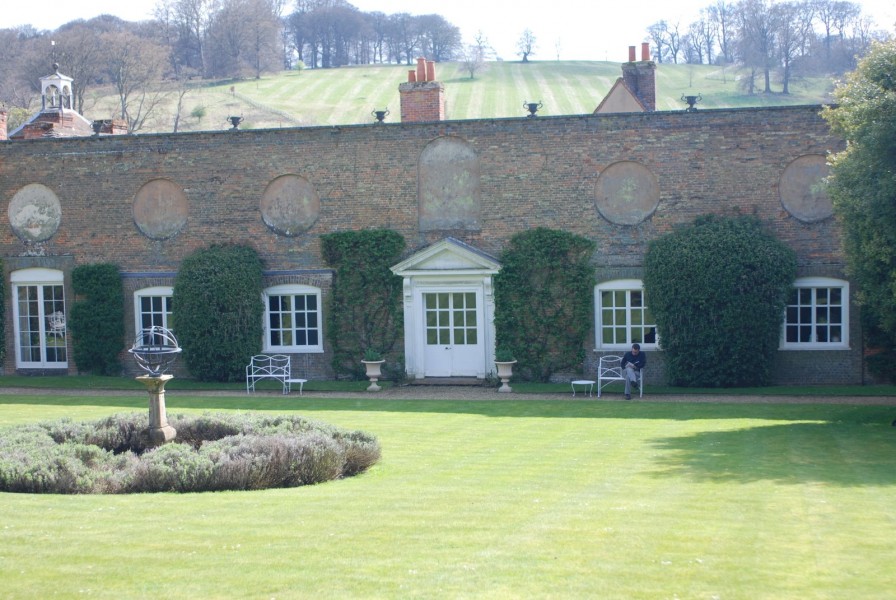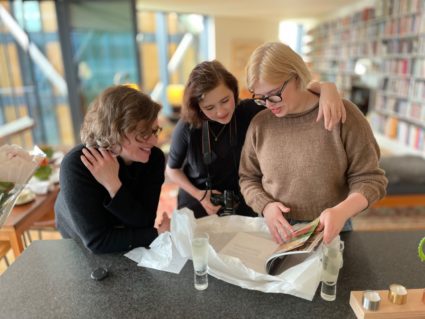of Lords and royal joints

 My goodness, there is something in the air that is causing massive sneeze dramas here in my household. Our garden is coated with some little evil-looking yellow florets and all the pink and white blossoms (again, my gardening expertise is showing now) that made the neighborhood trees so lovely to look at are now airborne and as such… unpleasant. I know my relations in Iowa who called recently to report a post-Easter blizzard will growl when they read of my discomfort with ostentatious spring. But there you have it.
My goodness, there is something in the air that is causing massive sneeze dramas here in my household. Our garden is coated with some little evil-looking yellow florets and all the pink and white blossoms (again, my gardening expertise is showing now) that made the neighborhood trees so lovely to look at are now airborne and as such… unpleasant. I know my relations in Iowa who called recently to report a post-Easter blizzard will growl when they read of my discomfort with ostentatious spring. But there you have it.
We continue with our credit-crunch holiday, and I can heartily recommend Stonor Park, just a few minutes from Henley-on-Thames and quite the most romantic country setting you can imagine. The same family have lived in it continuously for 800 years. I am not making this up. John and I paid assiduous attention to the guide’s reportage on current available males to marry off to Avery, but alas there’s only a toddler son (Avery put her foot down), and a baby expected this summer (which could be a girl anyway, so what’s the point, she won’t inherit anything). A fallow deer park, and just look at this house. The contents gave a fascinating glimpse of the life of a very active Catholic family in England (the photos of the current Lord Camoy with various popes was my first clue). While I found the endless sort of 18th century portraits a yawn, the gallery full of glass cases housing ephemera were touching and lovely: letters commanding the Camoys to attend a Thanksgiving service to observe the Prince of Wales’s recovery from typhoid, a seating plan for a dinner party including Rothschilds and Princesses from various European countries, a hand lettered thank-you note from Beatrix Potter.
And ducklings! The rest of the tour — architecture, art, history — was entirely eclipsed for Avery by the presence in the formal garden of a family of ten ducklings accompanied by a MOST attentive mother duck. She all but chased them through the plantings of hydrangeas, magnolias, fruit trees, topiary and holly bushes, in utter happiness. At one point she discovered a baby duck had been left behind in an ornamental pond, and she and two little French boys dashed around trying to coax it out of the water but succeeding only in scaring the little thing out of its feathers. Finally it escaped and was reunited with its irresponsible duck mother, and the drama was over.
At home in the evening Avery was performing her usual version of every child’s favorite occupation — looking in the refrigerator to see if anything more interesting has materialized since the last time she looked — and there on a shelf at eye level was… a duck. A butchered one, mind you, not looking at all duck-like, awaiting its transformation into pierrade tonight. Silence. Later, at bedtime, she asked me what sort of duck it is that we eat. I was ready for her. “NOT, definitely NOT, a duck that has ever been a mother to ten little chicks. We eat two types of ducks, Gressingham and Aylesbury, and I’m pretty sure both of them have white feathers, not the beautiful brown and gold feathers of the duck we saw today.” A sigh of relief. “Oh, thank goodness,” she breathed. “I don’t really like ducks who have white feathers, anyway.” So dinner is safe. These negotiations are intermittent and fraught with tension, and some are unsuccessful, but it appears that pierrade is on for this evening, at least.
John is off to a screening of a film produced by some intriguing people who are interested in intellectual property rights and, incidentally, interested in HIM. Could a job be in his future? I must say I would never have predicted that my techy, moneyish, wheelin’ and dealin’ husband would ever have been offered a job by some touchy-feely arty types, but hey: we live in interesting times. The film is called “Team Qatar” and follows the adventures of a group of Middle Eastern high school debaters. Who knew? I mused to Avery, “I wonder what these people are like, these producers,” and she said loyally, “Very good people, if they are interested in Daddy.” Watch this space. John actually mentioned my favorite novelist, Laurie Colwin, to them to ask what the procedure would be in securing the intellectual property rights to her novels, and they KNEW about her, unheard of! I like them already.
Avery and I, meanwhile, shall mosey on over to the V&A for our sort of semi-annual pilgrimage to the permanent fashion exhibition. I always get a charge out of South Kensington, and particularly the V&A in whose mammoth and old-fashioned library I spent so many years studying, writing my PhD all those years ago. Perhaps John’s new friends would like to make a film about my dissertation? Hmmm…
Our Easter was like all Easters: filled with chocolate, an egg hunt, and a baked ham. Actually, this last is the understatement of a cooking lifetime, I’m not exaggerating to say. On Thursday we acquired a positive jewel of a gammon joint, the best end of a joint that Mr Stenton, my local butcher, assured me was his own Easter dinner. “No, no, that’s all right, you go on and take it, I’ll have fish and chips, no matter at all…” We carried the joint home like we carried newborn Avery home from her first pediatrician’s appointment in the West Village of New York City. Thereupon:
Baked Easter Gloucester Old Spot Gammon
(serves EVERYONE!)
1 3 kg (6‑pound) smoked gammon joint
1/2 cup honey
1/2 cup Dijon mustard
Place the gammoin joint in a stove- and oven-proof casserole and add water to cover. Boil for 20 minutes, skimming the bubbling scum from the water. Drain, rinse and dry the joint with paper towels. Place a VERY large piece of heavy-duty aluminum foil in the casserole and place the joint on it, cut side up. Mix honey and mustard and pour over the entire joint. Wrap the joint in the foil as tightly as possible.
Bake at 160C, 325F for three hours. Then unwrap the joint, place cut side down in the considerable cooking juices and bake at 200C, 400F for a further half hour. Remove from oven and cover with foil for 15 minutes, then carve and serve.
****************
You have, we have NEVER tasted any cut of meat so smoky, so succulent, so evocative of the holiday, and believe you me, I have been cooking baked ham for Easter since you first wrote longhand.
We ate at about 3, and I can assure you that by 9 p.m. we were all quite peckish, and a sandwich on multigrain artisanal bread with a good smear of more Dijon and a thick slice of red onion hit the spot. Then the following evening it was onto the following classic pasta dish, lightened up by my dear sister and changed just a bit by me:
Spaghetti Carbonara
(serves 4)
8 oz dry spaghetti
1 1/2 cupes diced cooked ham (you know the one I mean!)
4 coves garlic, minced
1/2 cup grated Pecorino or Parmesan cheese
1/4 cup creme fraiche
3 tbsps light cream
1/2 tsp salt
2 large eggs, lightly beaten
fresh ground pepper
About 15 minutes before you want to eat, boil pasta according to directions, about 10 minutes. Drain over a bowl so you can reserve 1/2 cup of the cooking water. Set aside. In a large heavy skillet, warm the ham and add the garlic, stirring over the flame until the garlic is JUST cooked but not burned. Add the pasta, toss well and take off the heat.
In a large bowl, mix the cheese, creme fraiche, creme, salt and eggs. Then add the reserved past water and whisk well. Pour over the ham and spaghetti in the skillet and turn the heat up high for just long enough to toss the whole mixture together with tongs. Serve immediately.
************
Quite the most homemade, creamy and yet lightly smoky carbonara ever. You will thank me, and with a huge rocket salad on the side, or new-season asparagus, you have a meal. My sister swears by adding peas to her carbonara. I hate peas, but there you go. Up to you.
Now, it’s onto the home stretch as far as this heroic gammon joint goes. As soon as I make it, I will share with you my mother in law’s beloved recipe for “United States Senate Bean Soup,” a childhood favorite of my husband’s and with my newfound love of all things beans, doubtless to be one of my favorites too. At this point, your solid-gold, heirloom, Slow Food, posh ham has become quite the most economical raw ingredient you could ever have imagined. Even lords have to watch their pennies, after all.

